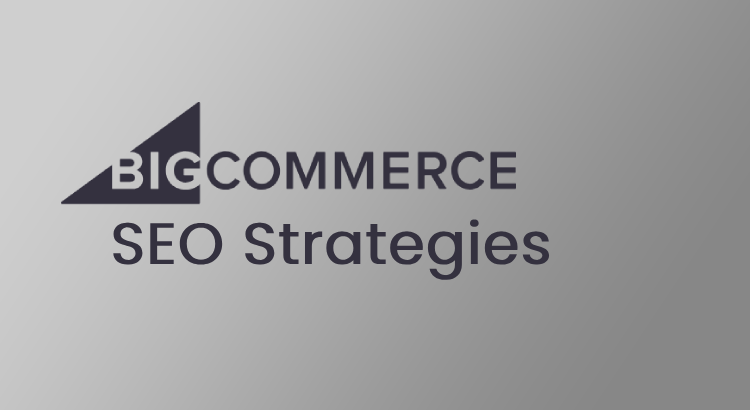BigCommerce SEO strategies are essential for enhancing the visibility and performance of online stores. By optimizing your store on the platform, you can achieve higher rankings and attract more traffic. With the right strategies in place, businesses can not only gain more customers but also increase conversions. This article will guide you through key methods to improve website performance and boost site rankings.
What is BigCommerce SEO?
Website ranking services for BigCommerce involve optimizing various aspects of an online store to improve its position on SERPs. From structuring URLs to refining metadata, these techniques ensure that product and category pages are easily discoverable by potential customers. The platform provides several built-in features that support optimization, but fine-tuning them is key to gaining a competitive edge.
BigCommerce Optimization Tips
Improving website visibility on the platform requires a mix of technical improvements and content enhancements. From refining page structures to optimizing loading speeds, each adjustment helps boost rankings and attract more visitors. Below are some essential methods to enhance your store’s performance.
1. Use an Optimized URL Structure
When configuring your store, it’s best to create short and clean URLs. The platform allows you to remove unnecessary elements like “.html” or “/page/,” making links more user-friendly.
Additionally, reducing duplicate content within your store can prevent ranking issues. Removing unnecessary copies of the same material and implementing caching techniques enhances the user experience and boosts rankings.
2. Optimize Metadata
Editing titles and metadata helps search engines understand what your pages are about. The platform provides dedicated sections for metadata across homepage, category, product, and blog pages. You can navigate these settings via:
- Homepage: Store Setup › Store Settings › Search Engine Optimization
- Category Pages: Products › Product Categories › Edit › Search Engine Optimization
- Product Pages: Edit any product › Other Details tab › Search Engine Optimization
- Web Content Pages: Storefront Content › Web Pages › Advanced Options
- Blog Posts: Storefront Content › Blog › Search Engine Optimization
3. Refine Page Titles
Google does not specify an ideal page title length, but best practices suggest keeping it under 60–65 characters. Including relevant keywords in page titles is crucial for ranking success. Long-tail keywords can improve website optimization efforts, helping attract the right audience. The page title should also include the store name to reinforce branding.
Example:
“Gaming Mouse with Customizable RGB Lighting | Your Store Name”
While search engines may sometimes display a product description instead of the designated meta description, having a well-crafted and unique meta description remains important.
4. Enhance Meta Descriptions
Meta descriptions should be engaging, relevant, and include a focus keyword within the first two sentences. Google often bolds key terms in search results, making listings more prominent. While the search engine sometimes cuts off descriptions based on algorithmic factors, crafting a compelling summary can increase click-through rates.
If you haven’t updated your meta descriptions in a while, review them to ensure they align with current trends and customer preferences.
5. Implement Structured Data Markup
Structured data helps search engines display additional information, such as star ratings and product details, directly in SERPs. Various third-party apps on the platform can generate structured data automatically.
For instance, Yotpo enables automatic formatting for star ratings, making listings more visually appealing. Advanced users can manually add schema markup to further enhance product visibility. Including structured data for FAQs and product highlights can improve rankings.
6. Enable Google AMP for Mobile Optimization
Google’s Accelerated Mobile Pages (AMP) improves mobile site performance by ensuring pages load almost instantly. Faster load times reduce bounce rates and enhance user engagement. While AMP has some design limitations, it can be beneficial for mobile-first shoppers.
Ensuring that product pages are AMP-compatible can provide a ranking boost, particularly under Google’s mobile-first indexing. However, businesses should balance AMP benefits with any restrictions on dynamic content.
7. Improve Page Speed on Desktop and Mobile
Fast-loading websites contribute to a better user experience and improved site rankings. Techniques such as lazy loading—where images load only when needed—help reduce initial page load time. Using modern image formats like WebP instead of JPEG or PNG can also improve compression and speed.
To evaluate site performance, use Google PageSpeed Insights and make adjustments based on its recommendations. Checking top-selling product pages ensures consistent high-speed performance across the store.
8. Optimize for Mobile and Core Web Vitals
Mobile-friendliness is crucial for site rankings. Google’s Core Web Vitals framework provides guidelines for improving user experience:
- LCP (Largest Contentful Paint): Ensure main images load within three seconds.
- FID (First Input Delay): Make interactions (e.g., clicks, form submissions) responsive within 100 milliseconds.
- CLS (Cumulative Layout Shift): Maintain stable page elements to avoid unexpected shifts while loading.
Adhering to these performance metrics helps maintain high rankings and a smooth shopping experience for customers.
9. Use Effective Category Descriptions
Writing engaging category descriptions with relevant keywords improves both search engine rankings and customer engagement. Each category should have a concise summary that explains the types of products available.
- Keep descriptions under 320 characters.
- Use internal links to guide customers to related products.
- Add external links where relevant to establish credibility.
A well-optimized category page enhances user navigation and helps search engines better understand the content.
10. Implement Internal Linking for Better Navigation
Internal linking improves the shopping experience by guiding customers to relevant products and categories while also helping search engines understand site structure. Well-placed links keep visitors engaged, encourage product discovery, and increase conversions.
Best practices for internal linking in ecommerce:
- Link to related products on product pages to promote cross-selling and upselling.
- Use category pages effectively to connect shoppers with broader selections.
- Incorporate internal links in blog posts to drive traffic to product sections.
- Ensure seamless navigation by keeping key shopping pages accessible from the homepage.
A strong internal linking strategy makes it easier for customers to find what they need while also improving the store’s overall visibility in SERPs.
Conclusion
Enhancing site rankings on the platform requires a combination of well-structured content, technical optimization, and user experience improvements. By refining metadata, improving page speed, and implementing structured data, businesses can gain better visibility and attract more customers. Regular updates and monitoring performance metrics ensure that an online store remains competitive in an evolving industry.


